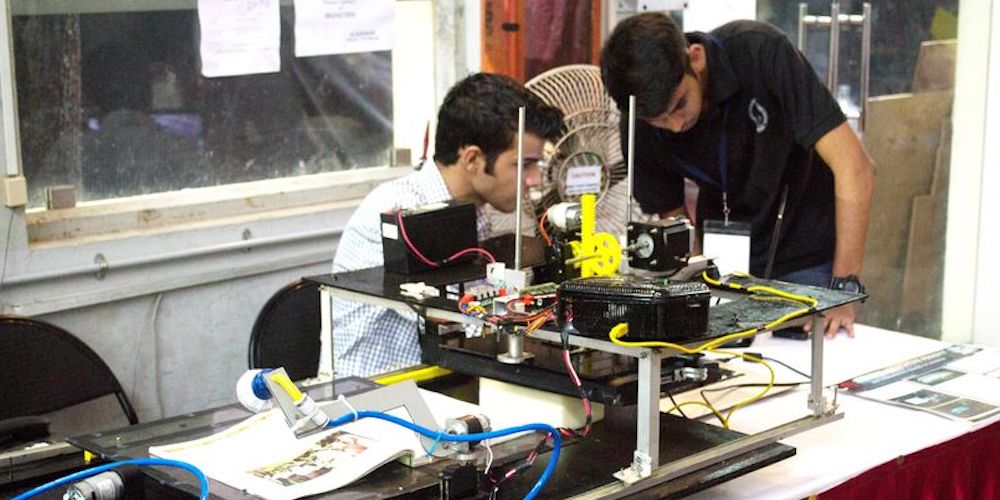IIT Madras’s new-generation superabrasive tools

A newly developed technology can now produce new-generation multi-point/single-layer superabrasive tools for advanced grinding applications to meet high productivity and energy-efficient material removal requirements. The tools produced also have enhanced tool life.
Grinding industries have aired their voices for developing advanced superabrasive cBN/diamond tools that meet high productivity and energy-efficient material removal requirements and customization based on local needs.
A research team led by Dr. Amitava Ghosh at IIT Madras has used advanced chemical bonding technology with an application-specific novel formulation of filler material and controlled spacing of grits on the tools by an indigenously developed semi-automatic grit-printing device.
The team recommends application-specific-advanced coatings to develop such new-generation superabrasive tools. The novel formulation offers an excellent blend of strength, wear resistance, and wetting characteristics (ability to spread well in a liquid state with low contact angle on solid superabrasives during brazing).
The grit-planting (planting/placing of grits in predefined coordinate position on grinding wheel’s working surface) setup allows a manufacturer to print grit in customised pattern to suit the requirement of an application. The recommended coating enhances the durability of the bond, thus adding life to the developed tools.
In a nutshell, these superabrasive tools can be produced using active brazing technology with remarkably striking attributes of high crystal exposure above bond level. The joint strength and wear-resistant characteristics of the bonds of these tools are superior to those of their commercial counterparts. These tools can withstand more grinding force, offer significantly higher tool life, and execute load-free grinding of advanced materials with an extremely high material removal rate.
This indigenous tool supported by the Core Research Grant (CRG) of the Science and Engineering Research Board (SERB), a statutory body of the Department of Science and Technology (DST), offers a competitive cost with a superior quality tool, which is also tailor-made as per the needs of industries like aerospace, automobile, mining, and dental surgery.
Incidentally, the students and faculty at the IIT Madras have earned a big name for the institute by coming oi\ut regularly with innovative projects. Some of the new initiatives include: creating the chennaiwaterlogging.org, a platform enabling public participation in Chennai region to improve disaster preparedness and response in communities and Team Abhiyaan, autonomous navigation team, which transformed an electric golf cart into an autonomous shuttle. Its Raftar Formula Racing marked a significant new milestone by switching from combustion engines to electric engines this year, in line with the global call for sustainability in the automotive industry.
IIT Madras has developed a robot with the aim to eliminate manual scavenging in India. Around 10 units have already been deployed across Tamil Nadu and the plan is to put them to use in Gujarat and Maharashtra next.
IIT Madras has also developed AI tool NBDrive to analyse cancer-causing mutations in cells. By looking at neighbouring cells or mutation of a genome, the tool can predict harmful mutations and distinguish them from neutral mutations. NBDriver has an overall accuracy of 89 percent and ranked second out of 11 prediction algorithms. Additionally, researchers here have also developed an AI-based mathematical model to identify cancer-causing alterations in cells. The algorithm leverages DNA composition to pinpoint genetic alterations responsible for cancer progression.



